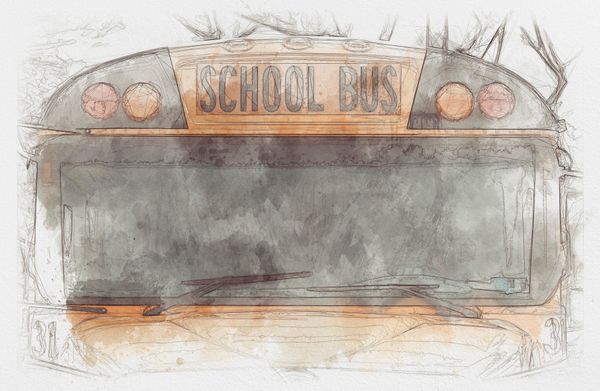A young alien on a distant planet peers through a high-powered telescope seeing Earth’s surface and busy Earthlings. The curious alien notices several brightly colored yellow[1] school buses and begins to track their movement. First, the alien observes that school buses are highly clustered for much of the day, and two times each day the clusters dissipate. The young alien is quite excited by this new discovery, and, confidently, terms it sudden bus dissipation (SBD™). After a few days, the exuberant alien notices that the yellow clusters stop dissipating. Puzzled, the alien continues to observe the buses and after two long days, the bus clusters dissipate again. Phew. All was well again until SBD™ suddenly ceases for 3 long months. How could this be?
I recently heard physicist and biologist Dave Piston from Washington University tell this parable relating to his experiences using microscopy to observes the inner workings of cells. Dave, the implied alien in this story, described how flickers of yellow might be dismissed under the microscope as artifacts and how focusing on the strong, bright yellow signals is all-to-easy. But the story struck me as more broadly questioning ‘how do we know what we know?’
The main activity of science is to transform data and observations into information and knowledge. Using the scientific method, scientists try to make sense of the world, in order to build new technologies, cure disease. Beyond science, we all hold certain beliefs we consider infallible. But how, then, are you sure of what you know? If you were an alien on a distant planet, and you didn’t know anything about school buses, what can you be certain of by observing them?
Professional-poker-player turned author-consultant recently described the importance of thinking in probabilities in her book Thinking in Bets: Making Smarter Decisions When You Don't Have All the Facts. How sure are you that you understand buses and their behavior? Duke describes that you “need to believe that your beliefs are in progress, under construction, and constantly strive to update them with a more accurate model of the world.” Indeed, processes are often opaque: we cannot see inside them or know all of the details, and so people, and aliens, use outcome as a heuristic, as a shortcut, for understanding.
Updating your thinking and your language, from ‘schools buses are for X’, to ‘I’m 72% confident that school buses are for X’ is a good start. But stopping here, and concluding that buses move together and apart, inevitably leads to an incomplete understanding of what school buses are for.
You have to be able to consider the other side — question the default, because otherwise progress cannot be made. “Doing this is difficult”, says Duke, “it shifts your identity to a different place”. Your identity now becomes acknowledging uncertainty, about how good are you at considering the other side, listening to skeptics, and evaluating new information.
Making this shift also stops you from having a defensive reaction. When a skeptic questions SBD™, you can “be agreeable in disagreement” says Duke, “because you can now view the disagreement as helpful, rather than as a threat; it completely reframes the disagreement.”
Through the telescope, you can be certain (i.e. a high degree of probability) that buses come together and move apart with a consistent behavior. And even detailing the daily, weekly, and seasonal patterns of school buses might lead to the realization of a consistent, albeit erratic, behavior. But how close is this information to an accurate understanding of what school buses are for?
In this simple parable, the alien is not even asking the right question: focusing on when the buses are parked, rather than when they’re active. While this is admittedly a pedagogic fable, all too often people ask the wrong question.
The moral of Dave’s School Bus story, is that sometimes the littlest things that go over looked, the flickers, the noise, are often the most important things of all. But the larger lesson here, is that being comfortable with not knowing, sitting with a degree of discomfort and a state of uncertainty, can often be what is needed to ask the right questions — what is required to really understand.
The Danish physicist and Nobel laureate Niels Bohr, famously quipped, “It is very hard to predict, especially the future”. It is not possible to know with absolute certainty how true are our understanding or beliefs. What is certain, though, is that maintaining an exploratory mind, being skeptical, and staying curious about your beliefs will ensure a deeper understanding of what you know.
Acknowledgement
I want to explicitly thank Dave Piston at WashU for sharing the School Bus story, and acknowledge Sandy Simon and Alison North at Rockefeller who helped develop the story over several years of lectures and teaching.
Further reading
1. School buses in the United States are uniformly yellow; here’s why.
